Recent Articles
Popular Makes
Body Types
2018 Kia Stinger Road Test and Review
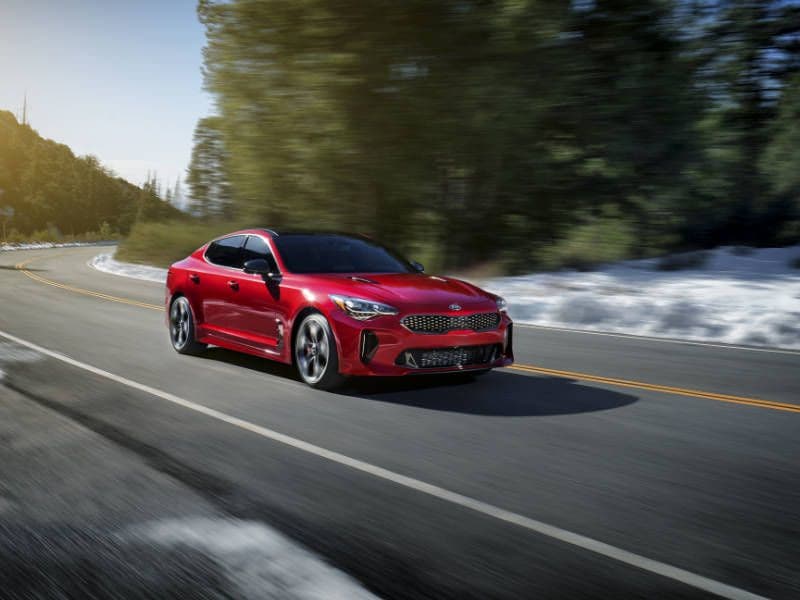
2018 Kia Stinger hero ・ Photo by Kia
Meet the Stinger, Kia’s new high-performance rear-drive premium sport sedan. Wait — a luxury performance car from Kia? Are we serious? Yes — and the new Stinger is a serious performer. When my fellow journalists and I arrived at Kia’s proving grounds in the Mojave Desert, we found an autocross-style course and a line of German and Japanese performance sedans. These included a BMW 440i Gran Coupe and 640i; an Audi A5 and A7; a Lexus GS F-Sport; an Infiniti Q50; and a Porsche Panama. Next to them was a line of Kia Stingers.
“Go ahead,” the Kia folks said. “Drive them back-to-back. Any order you like. Compare them to the Stinger.”
We did, and the Stinger held its own. The BMW 440i had a slight edge, but I liked the Kia better than the A5, the GS, the Q50 and even the Panamera. I was blown away because handling has never been a strong suit of Kia. When the company promised that the Stinger would be a world-class performance sedan, I was skeptical — but now I’m convinced.
A performance sedan from Kia. Wait — Kia?
The Stinger is the first true performance sedan from the Kia brand, and its credentials are solid: four- or six-cylinder turbo engines, rear- or all-wheel drive, and a fastback roofline that closely resembles that of the Audi A7 and Porsche Panamera. (We call it a sedan, but like a number of its European competitors, the Stinger is technically a five-door hatchback.)
It’s also a car that this South Korean brand needs. Kia is the more youth-oriented half of the Hyundai-Kia partnership, and over the last years, it has impressed us with the styling of its cars, from the hip-to-be-square shape of the Soul subcompact to the smooth simplicity of the mid-size Optima. What’s been missing from the lineup has been an engaging driving experience: Kia has struggled to build cars with responsive steering and an excellent ride-handling balance.
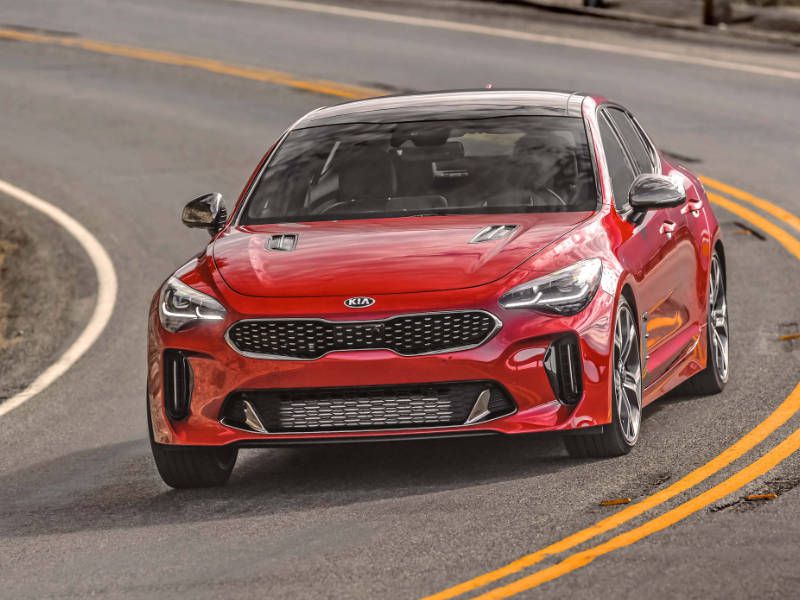
Photo by Kia
Kia's German Influence
So how did Kia make the Stinger so good? It followed a familiar formula. Back in 2006, Kia hired German designer Peter Schreyer away from Audi, and he revolutionized the company's styling. More recently, it hired another German, Albert Biermann, a BMW veteran whose last posting was as vice president of engineering for the legendary M division. The Stinger is the first performance car to be completed under his watch, and it’s clear that his influence is strong — especially after driving the Stinger back-to-back with the BMW 440i.
The engineers with whom Mr. Biermann is working are clearly willing to listen and learn: The Stinger is exceptionally poised and predictable, and it runs through the curves in a relaxed, natural manner. What’s all the more remarkable is that there’s nothing fancy about the Stinger’s suspension hardware: MacPherson struts up front, a multi-link setup out back and electrically assisted power steering making it change directions. GT models (the ones we drove) get driver-adjustable dampers, but for the most part, the Stinger does what it does because of a solid structure and proper chassis tuning. It’s a testament to the art of chassis engineering.
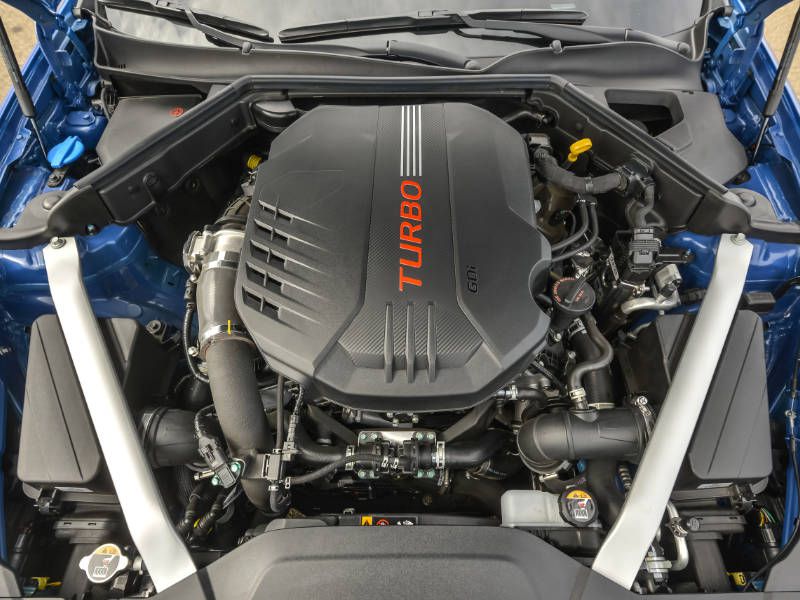
Photo by Kia
Sadly, styling comes up short.
What’s a little ironic here is that while the Stinger shows the wisdom of hiring Mr. Biermann, it seems to have been in the blind spot of Mr. Schreyer, who now oversees design for both Kia and Hyundai? The Stinger’s basic shape is sound, but it’s all the add-ons that let it down.
It's been said that a good car design needs no jewelry, and yet the Stinger is festooned with baubles. The chrome vents on the hood are the worst offenders — they aren’t even functional, by the way — but the shiny vents behind the front wheels (which do help move air), chrome mirror caps (seriously, Kia?) and fussy rear diffuser aren’t much better. These tacky tack-ons were most likely added to give the design more impact — but if more impact is needed, then Kia should have tweaked the design rather than add ornamentation. The Stinger isn’t a bad-looking car, but it lacks the handsome cohesiveness of other Kia designs like the Optima, Soul, Forte and even the new Rio.
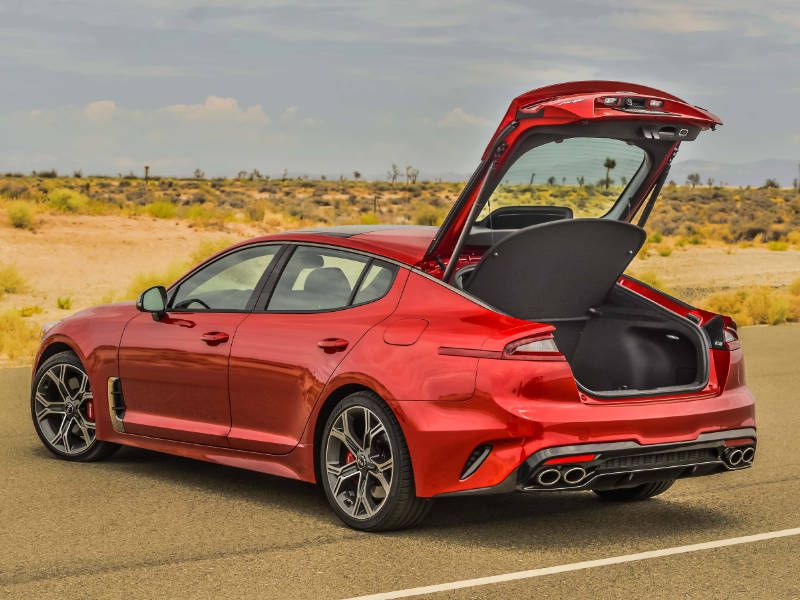
Photo by Kia
The cabin needs a bit more class.
What about the cabin? Visually, it’s a bit of a letdown as well. The materials are as good as any luxury car, and the control layout is logical and easy to use, just like other Kia vehicles. But as with the exterior, the design lacks excitement. The centerpiece is the three round jet-style vents, a design cue lifted from Audi and Mercedes, but they sit isolated in a featureless field of black leather. It’s as if the designers intended to do more with them, but they went to lunch instead. More creative use of trim would enhance the Stinger’s cabin, which needs more visual excitement.
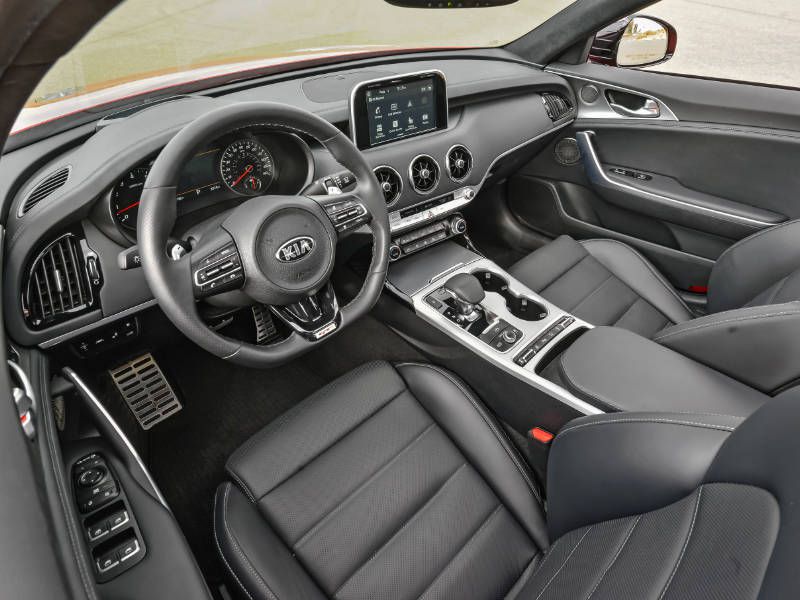
Photo by Kia
Practicality, thy name is Stinger.
On the plus side, the Stinger’s interior is exceptionally practical. The front seats are mounted low, sports-car style, but they are comfortable and supportive and offer a good view out. Fastback cars often make their rear-seat passengers suffer, and while the Stinger is a bit shy on back-seat headroom, it’s closer to a traditional sedan than many of its similarly shaped competitors. Tall folks can get in without too much worry of cricking their neck or giving themselves a concussion.
The trunk is the high point: It offers a generous 23.3 cubic feet of space, and the Stinger’s hatchback design allows even the bulkiest items to be loaded with ease.
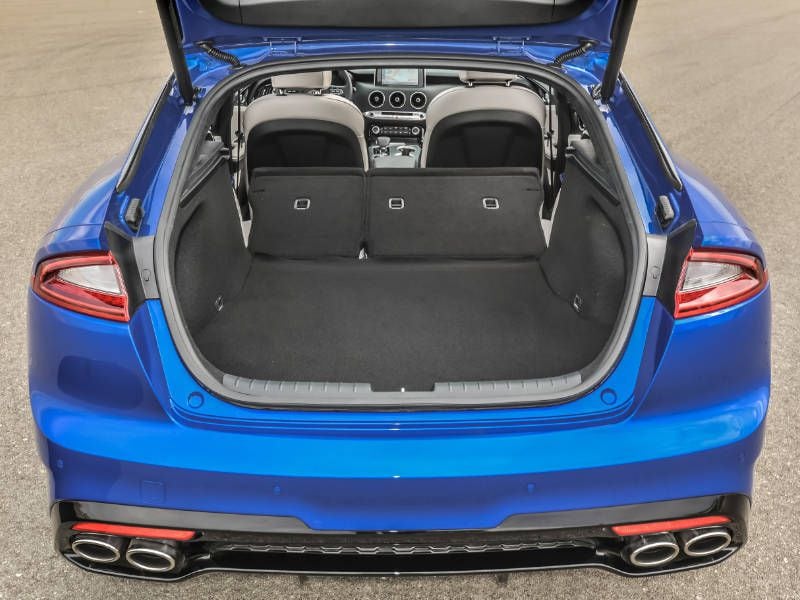
Photo by Kia
The biggest strength is how it drives.
Let’s get back to the way the Stinger drives. My test wasn’t just limited to a comparison against German cars on flat asphalt; first, I headed out of Los Angeles on the twisty Angeles Crest Highway, one of the most challenging and entertaining bits of pavement in an area filled with great driving roads. I was driving the GT model, which powered by a 365-hp twin-turbo V6 with rear-wheel drive. (All-wheel drive is optional on all Stingers.)
Power from the 3.3-liter V6 engine was excellent, and the eight-speed automatic — standard on all Stingers — always seemed to know what gear it needed to be in. (Later in the day, I took a quick drive in a four-cylinder Stinger, which gets a 255-hp turbocharged 2.0-liter four-cylinder. While I need more seat time before passing judgment, my first impressions were very good.) I liked the way the Stinger felt in the curves, and my nerve ran out long before the grip of the Stinger’s tires were anywhere near their limits of traction.
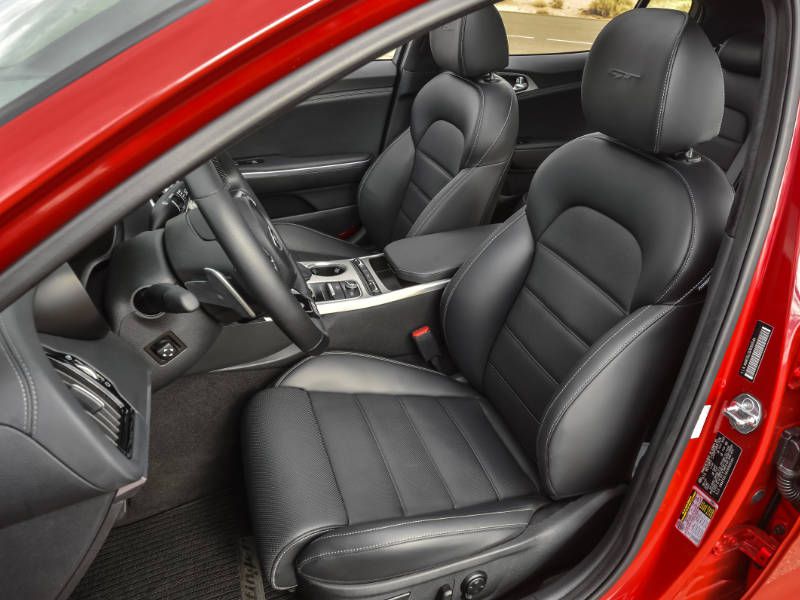
Photo by Kia
Stinger at 120 MPH
When we arrived at Kia’s desert proving grounds, our first stop was the high-speed oval. Kia touts the fact that the Stinger in GT form can achieve a top speed of 167 mph, whereas most of its German competitors only get to 155. (It’s a bit of a disingenuous claim: Several German automakers have a gentleman’s agreement with the government to limit their cars’ top speeds to 155. Unrestricted, many of the cars could go faster.)
We were invited to take the Stinger for a high-speed cruise, first at 90 mph, then at 120 mph (though I managed to sneak up to a buck-twenty-five or so). No surprises here: The Stinger feels solid and secure, even at a two-mile-a-minute pace.
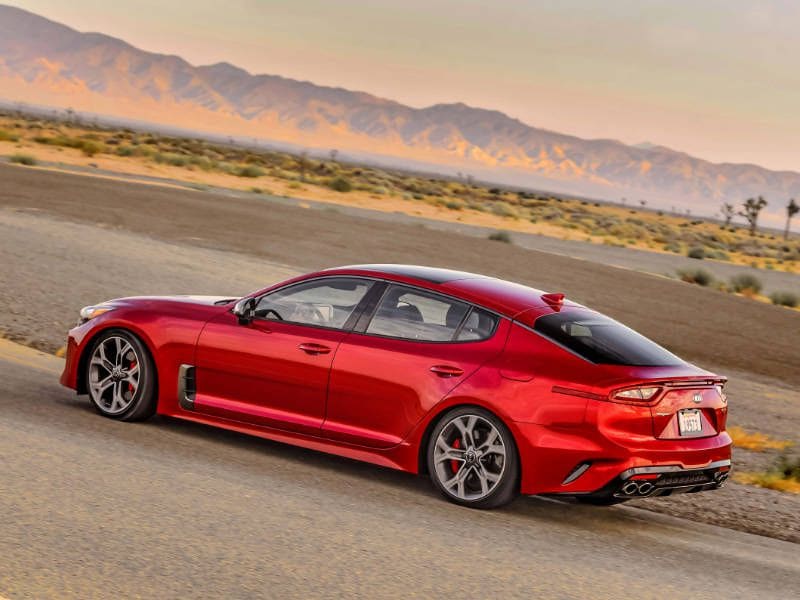
Photo by Kia
Kia vs. Germany
Next up was our comparison drive against the Germans and Japanese, and you know how that went: The Stinger gave up nothing to its well-established (and much more expensive) rivals. Just as it did on the high-speed loop, the Stinger felt stable and predictable in the slalom and easy to guide through the long, sweeping curves.
The BMW 440i GC had the edge over the Stinger, but I thought the Kia was on par with the Audi A5 and better than the Infiniti Q50 and the entry-level Porsche Panamera. When did you think you’d ever see anyone say that a Kia is better than a Porsche?
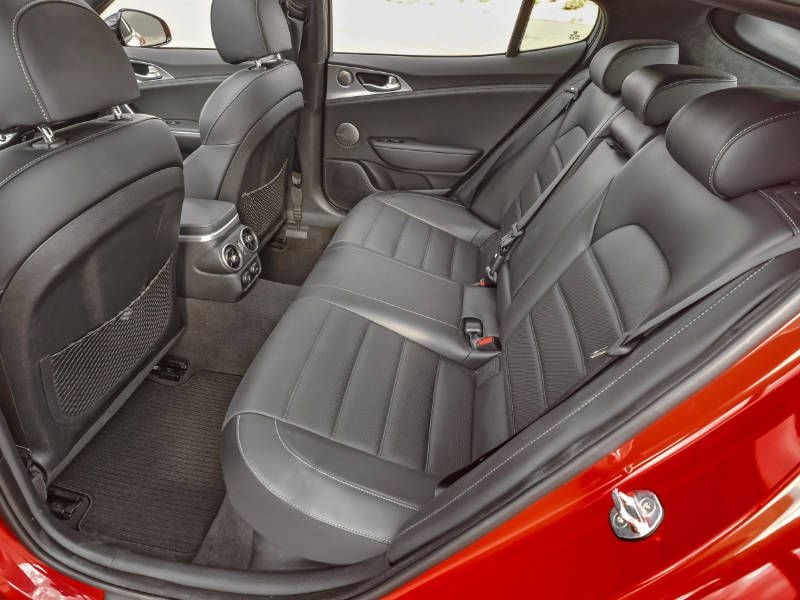
Photo by Kia
Letting it All Hang Out
My last stop was Kia’s handling road course — basically, a private racetrack with regular street-style markings, where hustling through the course gives one the devilish feeling that one is breaking the law. Here I alternated between rear- and all-wheel drive Stingers, with the opportunity to safely push the car harder than I could on public roads.
The rear-drive Stinger stayed pretty firmly planted; it takes a lot to get it to understeer, but it takes a lot more to get it to oversteer, even with the “Sport” drive mode selected. And when it does step out, it does so rather suddenly. The all-wheel-drive model felt a bit more sluggish in the straights but quicker out of the turns. (That said, my colleague and fellow Autobytel writer Tony Swan — who is an accomplished racer and a better driver than me — said that he was able to get around the track quicker in the rear-wheel-drive version.) All the time I was racing around the track in the Stinger, I kept saying to myself, "This is a Kia?"
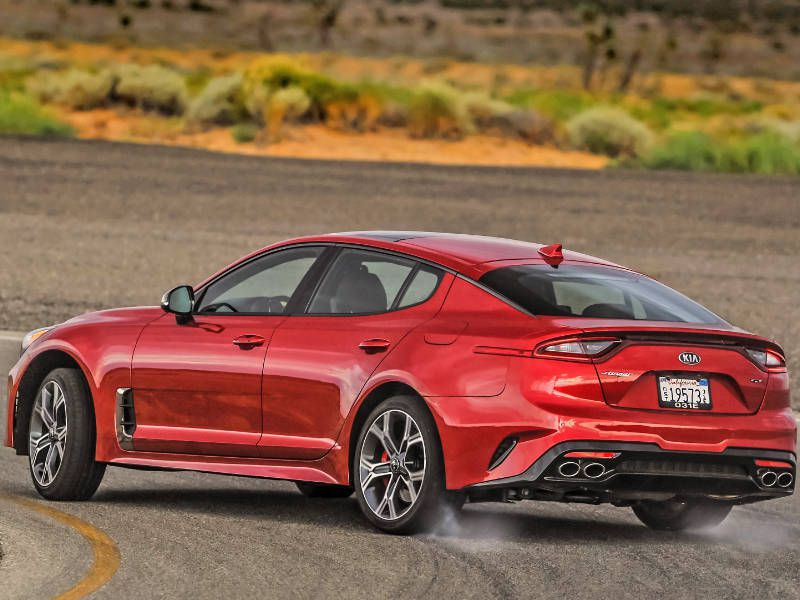
Photo by Kia
What'll it take to put a Stinger in your driveway?
Kia hadn’t announced pricing at the time we published this review, but the company estimates that the four-cylinder Stinger will start around $32,795 (including destination charge) and the V6-powered GT will list for around $39,895. Fully loaded all-wheel-drive models should top out at around $52,000, and Kia thinks most buyers will spend somewhere in the high 30s to mid-40s for their Stingers. Is that too much money for a Kia? It’s expensive, but let’s not forget that a BMW 440i Gran Coupe — the car that impressed me most during our Stinger comparison — starts at $50,495. For what it can do, the Stinger is one heck of a bargain.
Will the Kia Stinger sell? It has its work cut out: Many buyers still don’t realize that Kia builds good daily drivers, and the idea of a high-performance Kia will be hard for some to grasp. I do wish the styling details were a bit better executed and the interior a bit more flashy; that would make the difference between the Stinger being a great car and a real knockout.
Still, just the fact that Kia produces a car that can run with the Germans should do wonders for the brand. Let’s hope the Stinger is only the beginning of more wonderful things from Kia.
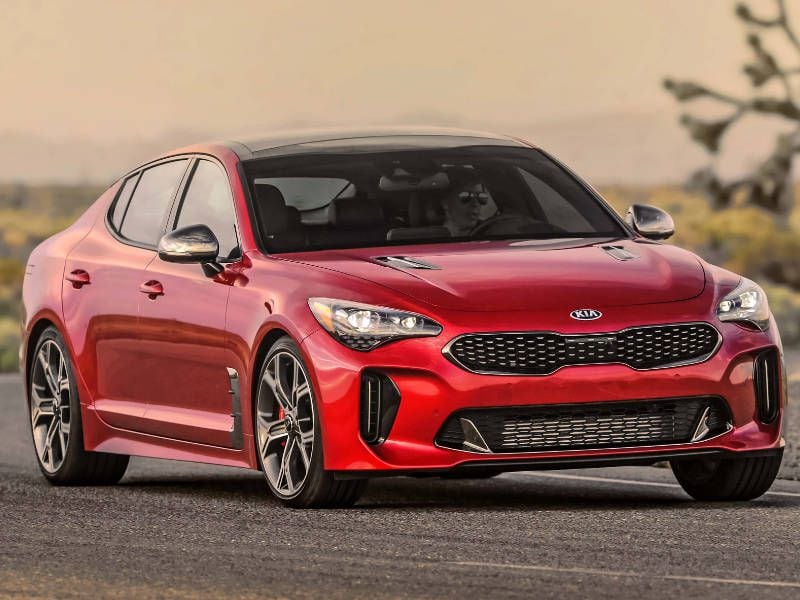
Photo by Kia